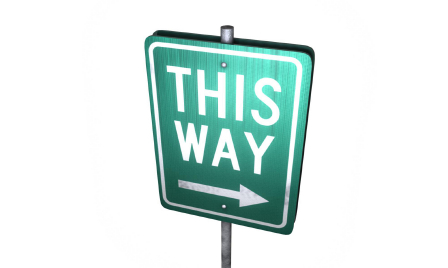An easy to use navigation system is one the most important elements of a usable website.
Without proper navigation, it will be difficult or impossible for your website visitors to find the other pages within your site. Having effective navigation will allow your visitors to have a more enjoyable and more engaged experience when using your website. The more your customers like your site experience, the more likely they are to make repeated visits and that in turn leads to improved customer satisfaction and conversion metrics for your business.
Putting together a usable navigation system is not a difficult thing to do. Here are a few tips you can follow to ensure your site navigation will be usable and ensure an enjoyable user experience.
Top Tips to Make Your Website Navigation More Usable
1. Use a Consistent Navigation structure across all pages of your site – Make sure that your navigation is at the same location on every page of your website. Don’t confuse your visitors by making them look for navigation every time they hit a new page. A consistent page layout helps your site visitors develop a consistent way to navigate the site from page to page. Users will develop a “mental model” of how the site navigation works and the simpler and easier it is for them, the more likely they are to visit more pages, features and content in your site…all of which are likely needed to achieve your business objectives.
2. Test your navigation – Take time to test your navigation to ensure that all of your links are working and going to the correct pages. Check all of your links and/or use an automated tool to do this. And testing your navigation in usability testing is essential as well. You can test this by incorporating some “findability” tasks into your usability tests and asking users to find things. For example, “Where would you go to find women’s shoes on this website?” – and then seeing if users are able to navigate successfully to the correct page or item on the website.
3. Make your logo (or page header graphic) clickable – so that it returns to your home page. By doing this, the logo will function as an effective navigation element back to your site’s homepage.
4. Use Text Links to Make Your Navigation Clear – Always, use text links in your navigation. Even though it is possible to make some wonderful looking navigation systems with JavaScript, you need to remember that some people actually have Java disabled on their computers, which could make it impossible for them to navigate your site. Using simple text links makes it easier to ensure that everyone visiting your site can use your navigation. Make sure that you use appropriate text. You do not want to make your visitor have to guess where the link is going to lead them
5. Underline your text links with consistent formatting – Make sure that your links are underlined. People that are new to the Internet expect links to be underlined and usually blue. If you make your links red and not underlined, you could confuse new users to the Internet and they will leave your site out of frustration. This may seem hard to believe but we have seen multiple data points from a variety of companies and underlined links typically have higher click through rates.
6. Include a search box near the top of your page – If your site visitors do not see what they want from the site navigation and/or site links, they may do a quick search to see if they can find what they are looking for. An effective search box that leads them to well organized results will make them more likely to stay on your site.
7. Create a custom error page. By including an error page in case somebody types in the wrong URL, or if there is a broken internal link, a custom error page will come up in place of it. You can use this page to lead them back to your home page. It can also be effective to put a comment on it, like, “Oops, this page no longer exists. Please click on this link to visit our home page. Then underneath this, you can put information about your newsletter or e-mail list with a sign up a form. You may be surprised to find out how many people will sign up to your list from a custom error page.
8. Include a site map. Having an HTML site map with a link to it, on every page of your website leading to it, will help visitors to get around your website if they cannot find it using your site search or main navigation. This should be seen as a last resort navigation since it typically means that your main navigation and search options “failed” the customer. A site map provides you with another method to let customers find the information they are seeking. And from a search engine optimization perspective (SEO), an .xml sitemap is essential since it helps the search engines more effectively index the pages in your website. If your website pages are not indexed, they will not show in the search engines, so this is extremely important.
In summary, providing your website visitors with effective navigation on your website is essential for website usability. When you keep your website navigation consistent and easy to understand, you provide a more usable experience for your web site visitors.






